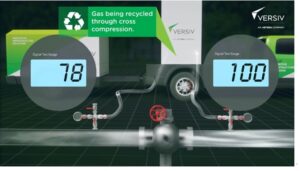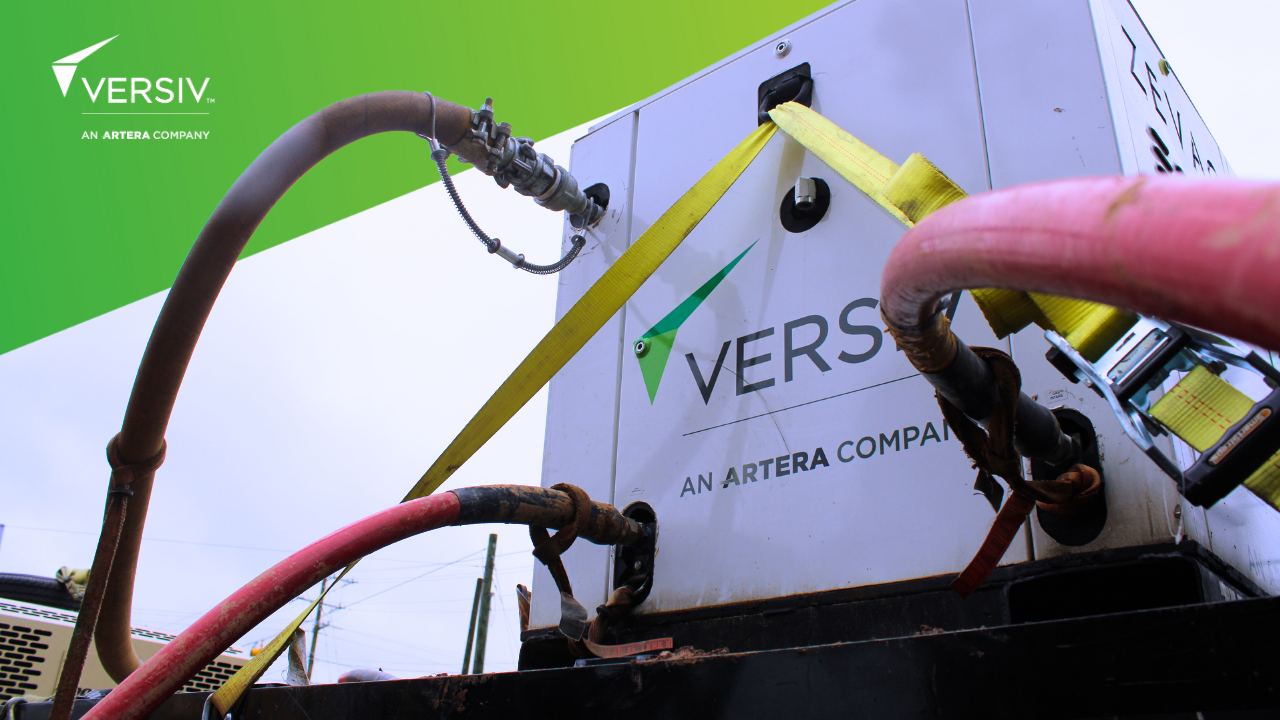Introduction
In the realm of the natural gas industry, the quest for sustainability has never been more pressing. With methane emissions contributing significantly to climate change and industry regulations mounting, finding innovative solutions to reduce these emissions has become a top priority for many gas professionals worldwide.
Among these solutions, cross compression technology stands out as a promising method for mitigating methane release and minimizing environmental impact. In this article, we delve into the intricacies of cross compression, unraveling its mechanisms, benefits, and real-world applications to equip gas professionals with the knowledge they need to make informed decisions in the pursuit of sustainability.
The Basics of Cross compression
At its core, cross compression, also known as recycling gas or recompression, is a process designed to capture gas emissions from pipelines, depressurize it, and transport it back into the pipeline.
This technology operates on the principle of avoiding blowdown or purges, ensuring that valuable gas resources are not wasted through venting or flaring. By capturing and recycling gas that would otherwise be released  into the atmosphere, cross compression plays a critical role in greenhouse gas capture and emissions reduction.
into the atmosphere, cross compression plays a critical role in greenhouse gas capture and emissions reduction.
A typical cross compression system consists of compressor units, pipelines, fittings, and other essential components, facilitating the efficient recapture, voluntary venting and utilization of gas resources. Gas operators typically either purchase equipment themselves and self-perform this work or work with a turnkey service provider like Versiv. We recently authored an article with Trenchless for Gas Infrastructure magazine on how to decide which approach is best for your business.
How Cross Compression Works
The process of cross compression can be broken down into several key steps. First, gas recovery units extract excess gas from pipelines, preventing it from being released into the atmosphere.
 Methane capture and methane mitigation is a central focus of this process, as the recovered gas is compressed to increase pressure, making it suitable for transportation through pipelines to storage facilities. Recompression ensures that gas is not lost during transportation, further minimizing emissions, and maximizing resource utilization. Finally, the compressed gas is restored back into the other end of the pipeline, minimizing waste, and maximizing the economic value of recovered resources. For a more visual view of the process, please watch the full animated video here: [Versiv Cross Compression].
Methane capture and methane mitigation is a central focus of this process, as the recovered gas is compressed to increase pressure, making it suitable for transportation through pipelines to storage facilities. Recompression ensures that gas is not lost during transportation, further minimizing emissions, and maximizing resource utilization. Finally, the compressed gas is restored back into the other end of the pipeline, minimizing waste, and maximizing the economic value of recovered resources. For a more visual view of the process, please watch the full animated video here: [Versiv Cross Compression].

This streamlined process not only reduces methane emissions but also enhances operational efficiency and pipeline evacuation within the natural gas infrastructure. Cross compression is used on a wide variety of pipeline construction and maintenance projects. These applications include pipeline pigging, which is the practice of using pipeline inspection tools, devices generally referred to as pigs or scrapers, to perform various maintenance operations. This is done without stopping the flow of the product in the pipeline. Pigging and pipeline pigging are essential practices in the oil and gas industry, particularly concerning sustainability efforts aimed at mitigating methane emissions. Methane, a potent greenhouse gas, is a byproduct of oil and gas production and transportation. Regular pigging operations help to detect and address methane leaks in pipelines, reducing emissions that contribute to climate change.
Additionally, efficient pipeline pigging can prevent methane release during transportation by maintaining pipeline integrity and minimizing fugitive emissions. Embracing sustainable pigging practices not only enhances environmental stewardship but also aligns with global initiatives to curb greenhouse gas emissions.
In order to execute an operation, tools need to be loaded and unloaded into the pipeline, requiring the launcher and receiver barrels to be depressurized each time a tool run is required. Traditionally, this would have been achieved by venting the natural gas to atmosphere, but with cross compression this can be minimized or virtually eliminated. In many cases during cleaning runs, upwards of six tools could be ran, requiring 12+ gas release events. In addition to environmental benefits, cross compression on applications like this can reduce potential ignition hazard concerns as well as minimizing public concern of natural gas smell.
Advantages of Cross compression
The adoption of cross compression technology offers a multitude of benefits for the environment, the economy, and local communities. From an environmental standpoint, cross compression plays a crucial role in methane reduction, helping to combat climate

change and improve air quality by minimizing the release of harmful pollutants.
Additionally, by capturing and recycling gas, cross compression contributes to resource conservation and environmental stewardship. On the economic front, cross compression delivers tangible cost savings by reducing losses associated with venting or flaring gas and maximizing the value of recovered resources.
Furthermore, by aligning with regulatory standards and environmental goals, cross compression helps natural gas companies maintain compliance and avoid costly penalties. Local residents are often alarmed during natural gas construction projects when a line needs to be cleared or purged of methane and is released. The smell generates countless 911 calls, and even if the construction site is safe, can distract first responders from true emergencies. Cross compression prevents local residents from being exposed to the smell of gas, making it the best choice when working in urban environments near homes, businesses, schools, and other public facilities. After working with Versiv, every customer receives an impact report detailing the methane emissions mitigated and the EPA equivalencies of those values. This allows gas operators to share the positive impact of using cross compression in real terms.
Case Studies: Real-World Applications
The effectiveness of cross compression technology is perhaps best illustrated through real-world case studies of its implementation in the natural gas industry. Across various regions and operational contexts, natural gas operators have successfully deployed cross compression systems to achieve significant reductions in methane emissions while enhancing operational efficiency and profitability.
Here are just a few examples of projects Versiv has supported:
- The City of Clarksville used Versiv’s cross compression solution to capture methane on a pipeline improvement project.
- Greenville Utilities used cross compression to capture methane emissions on a pipeline relocation project
- Dominion Energy and Columbia Gas of Virginia implemented cross compression during regularly scheduled station maintenance at the Bear Garden Power Plant. This project won an internal award Environmental Stewardship Project of the Year at Dominion Energy.
By analyzing these case studies, we gain valuable insights into the tangible benefits and potential challenges associated with cross compression adoption, highlighting its adaptability and effectiveness in diverse settings. Follow us on social media to see regular project updates from urban and rural settings from across the country.
Overcoming Challenges
While cross compression holds immense potential for methane reduction and operational improvement, its adoption is not without challenges. Technical complexities, logistical considerations, and regulatory requirements may pose obstacles to implementation. However, with strategic planning, expertise, collaboration, and innovation, these challenges can be overcome. By addressing concerns related to technology integration, infrastructure compatibility, and regulatory compliance, gas professionals can navigate the transition to cross compression with confidence and maximize the benefits of sustainable methane reduction.
Future Outlook and Innovation in Recompression Equipment Design
Looking ahead, the future of cross compression technology is bright, with ongoing research and development driving continuous innovation in the field. Advancements in equipment design, monitoring systems, and data analytics are poised to further enhance the efficiency and effectiveness of cross compression, paving the way for even greater methane reduction and sustainability gains. As the natural gas industry evolves and embraces renewable energy solutions, cross compression is poised to play an integral role in facilitating the transition to a cleaner, greener energy landscape.
Use Cross Compression to Capture Gas on Your Next Project
Cross compression technology represents a powerful tool in the fight against methane emissions and climate change. By capturing and recycling excess gas resources, cross compression not only reduces environmental impact but also delivers economic benefits and operational improvements for natural gas companies. As we continue to prioritize sustainability and innovation in the energy sector, cross compression stands out as a beacon of progress, offering a path toward a more sustainable and resilient future for the natural gas industry and the planet as a whole.
For more information on how cross compression technology can benefit your operations and contribute to methane reduction, contact us. Let’s work together to build a greener, more sustainable future.

